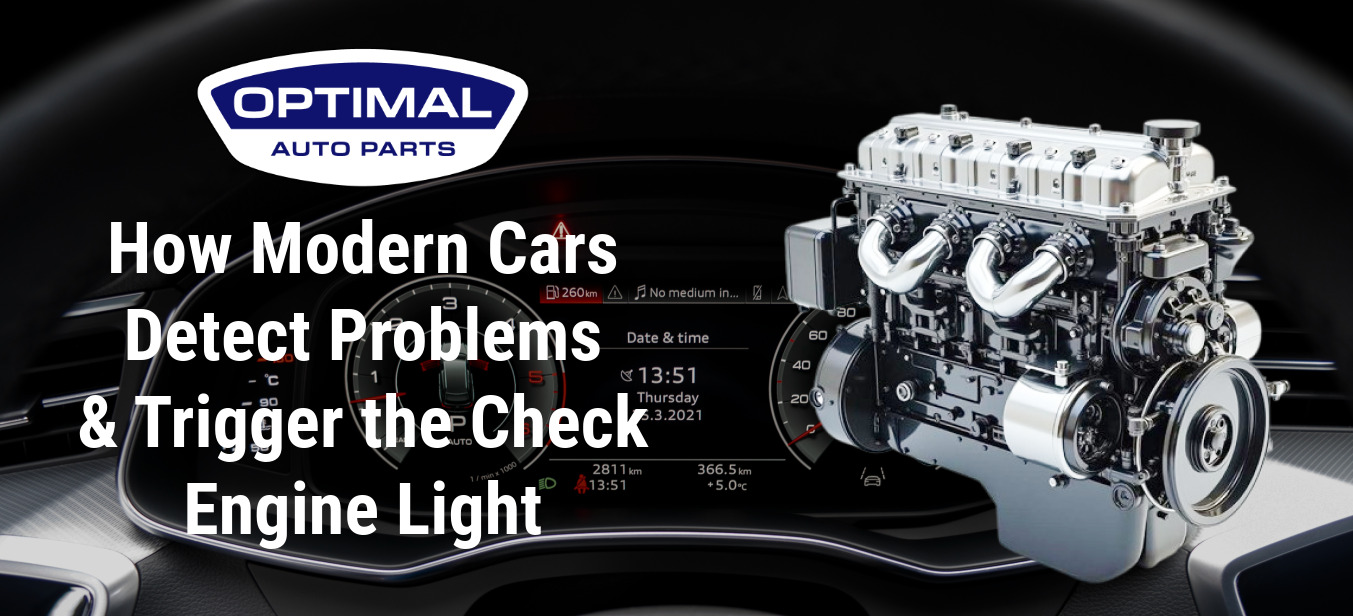How Modern Cars Detect Problems and Trigger the Check Engine Light

Table of Contents
- Introduction
- The Role of the Check Engine Light Symbol
- How Modern Cars Detect Problems
- Why Is Your Check Engine Light Blinking?
- Common Causes of the Check Engine Light Turning On
- Can You Rely on an AutoZone Check Engine Light Service?
- Steps to Perform a Check Engine Light Reset
- Frequently Asked Questions (FAQs)
Introduction
Have you ever been driving along, minding your own business, when suddenly the dreaded check engine light symbol pops up on your dashboard? It’s like your car’s way of saying, “Hey, something’s up!”. Whether it’s a small issue or a major problem, understanding how modern cars detect problems can help you stay calm and take the right steps.
In this blog, we’ll dive into how cars identify issues, why your check engine light blinking might mean trouble, and how to deal with it—from DIY solutions to checking out an AutoZone check engine light service.
Ready to find the perfectly used Ford engine at the best price?
The Role of the Check Engine Light Symbol
The check engine light symbol is crucial to your car’s diagnostic system. When it lights up, it means the car's onboard computer (ECU) has detected something outside the normal range of operations. Sometimes, it’s a quick fix; other times, it requires immediate attention.
But what triggers this light, and how does your car even know there’s an issue?
How Modern Cars Detect Problems
Modern vehicles are like rolling computers. They’re equipped with advanced technologies that monitor performance, emissions, and safety. Here’s how they do it:
-
Onboard Diagnostics (OBD-II)
Every car manufactured after 1996 comes with an OBD-II system. It’s like a universal translator between your car and diagnostic tools. The OBD-II continuously monitors your car’s performance and alerts you through the check engine light symbol if something’s amiss.
-
Sensors at Work
Modern cars have dozens of sensors, including:
- Oxygen Sensors : Monitor the air-fuel mixture.
- Mass Airflow Sensors : Measure the amount of air entering the engine.
- Catalytic Converter Sensors : Keep emissions in check.
- Knock Sensors : Detect abnormal engine vibrations.
Why Is Your Check Engine Light Blinking?
A check engine light blinking is often more serious than a steady light. It usually means there’s a misfire in the engine, which can damage the catalytic converter. Driving with a blinking light isn’t recommended; it’s best to stop and address the issue immediately.
Common causes for a blinking light include:
-
Faulty spark plugs
-
Ignition coil problems .
-
Engine misfires
-
Fuel delivery issues
When any of these sensors detect a problem, they send data to the ECU, which then decides whether to trigger the check engine light symbol.
Ready to find the perfectly used Ford engine at the best price?
Common Causes of the Check Engine Light Turning On
The check engine light symbol can light up for a variety of reasons, including:
Common causes for a blinking light include:
- Loose Gas Cap : Surprisingly common and easy to fix.
- Faulty Oxygen Sensor : Affects fuel efficiency and emissions.
- Worn-Out Spark Plugs : Can cause engine misfires.
- Malfunctioning Catalytic Converter : Leads to increased emissions.
- Issues with the Mass Airflow Sensor : Impacts engine performance.
Knowing these common causes can help you diagnose the problem faster—or at least know when to call in the experts.
Can You Rely on an AutoZone Check Engine Light Service?
When your check engine light symbol comes on, heading to AutoZone for a free diagnostic check is a convenient option. Their AutoZone check engine light service involves connecting a scan tool to your car’s OBD-II port. This gives you error codes that hint at what might be wrong.
While AutoZone can provide helpful insights, remember that their diagnostics are limited to code reading. A mechanic can delve deeper into the problem if needed.
Steps to Perform a Check Engine Light Reset
After resolving the issue, resetting the check engine light symbol can be satisfying. Here’s how to do it:
-
Use an OBD-II Scanner:
- Plug the scanner into your car’s OBD-II port.
- Follow the device instructions to clear the codes.
-
Disconnect the Battery:
- Disconnect the negative terminal for about 15 minutes.
- Reconnect and start your car.
-
Drive Normally:
- In some cases, the light resets itself after a few drive cycles if the issue is resolved.
-
A word of caution:
- Resetting the light without fixing the issue might lead to bigger problems down the road.
The check engine light symbol might seem intimidating, but it’s your car’s way of protecting itself—and you. Understanding how modern cars detect problems, the importance of OBD-II systems, and how to deal with issues like a check engine light blinking can save you time, money, and stress.
When in doubt, take advantage of services like AutoZone check engine light diagnostics. But remember, while resetting the light might seem like a quick fix, always address the root cause for long-term peace of mind.
So, the next time that little light pops on, you’ll know exactly what to do!
Frequently Asked Questions (FAQs)

A blinking check engine light symbol usually means a severe issue like an engine misfire. Stop driving and get it checked immediately.

Yes, but only as a first step. While AutoZone’s free service is helpful, it’s not as comprehensive as a full mechanic’s inspection.

You can reset it using an OBD-II scanner, disconnecting the battery, or driving normally if the issue has been resolved.
Play to listen to this blog
Recommended Reads
- Where Should I Buy Used Engine and Used Transmissions in the USA?
- Step-by-Step Instructions for Checking Your Car Engine Oil Levels
- How to Exchange a Part of a Car on Finance – Optimal auto Part